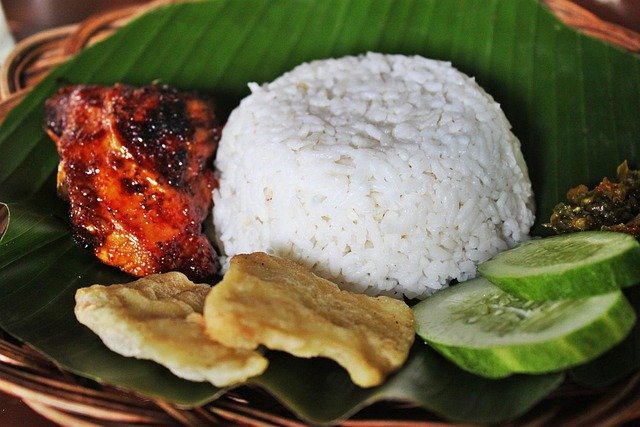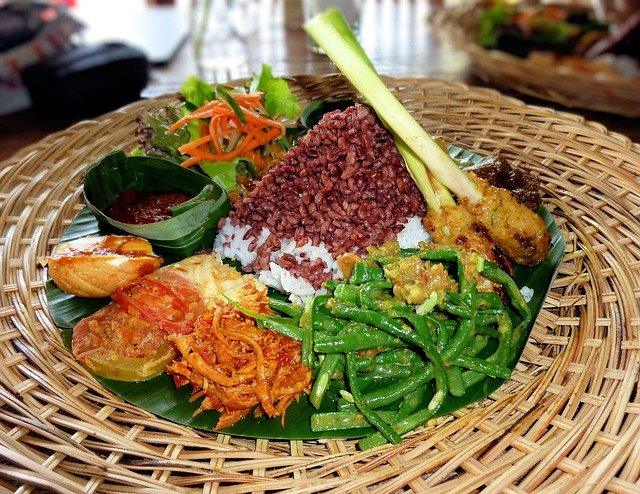Discover Indonesian Colonial History and Cuisine in Amsterdam
Store your bags and enjoy Amsterdam’s Dutch-Indonesian flavors and history:
"*" indicates required fields
Uncover the rich flavors and stories of a shared past
Amsterdam offers a unique journey through Indonesian colonial history and cuisine, inviting visitors to explore a layered cultural legacy that’s both complex and delicious. From historical landmarks to iconic dishes like rijsttafel, the city reveals how Indonesia’s influence lives on in Dutch culture today, especially through food.


Explore Dutch-Indonesian cuisine in Amsterdam
The connection between the Netherlands and Indonesia spans over 300 years, and Amsterdam is one of the best places to experience this legacy firsthand. Walking through the city, you’ll find traces of Indonesian colonial history in Amsterdam—from museum exhibitions to century-old spice routes that transformed European kitchens.
But it’s the Dutch-Indonesian cuisine in Amsterdam that truly brings this history to life. Try a traditional rijsttafel (rice table) at long-established restaurants like Kantjil & de Tijger, Restaurant Blauw, or Sama Sebo, where dozens of small dishes showcase Indonesia’s regional diversity. Think satay with peanut sauce, rendang, sambal, and richly spiced vegetables; each dish a flavorful tribute to Indonesian food history in the Netherlands.
Leave your bags behind with Drop&Go
Exploring Amsterdam’s food culture and historic neighborhoods is best done hands-free. Whether you’re visiting museums in the Jordaan or sitting down for a leisurely Indonesian meal, carrying suitcases or shopping bags can ruin the experience.
That’s where Drop&Go comes in. Located conveniently in central Amsterdam, Drop&Go offers secure, hassle-free luggage storage, so you can immerse yourself in Dutch colonial food heritage without the burden of heavy bags. Just drop off your items and enjoy the city light and free.
Insider tips: make the most of your culinary and historical experience
- Visit the Rijksmuseum: their colonial history section offers deeper insight into Dutch-Indonesian relations.
- Walk through De Pijp: a multicultural area home to some of the best Indonesian restaurants and spice shops.
- Take a food tour: several local guides offer Indonesian culinary heritage Amsterdam tours, pairing food tasting with historical storytelling.
- Pack light: wear comfortable clothes and skip large backpacks, especially when dining or walking through tight museum spaces.

Drop&Go is open and ready for you
Planning to explore Indonesian colonial history and cuisine in Amsterdam? Drop&Go is open almost daily. Our storage service is perfect for day-trippers, international visitors, or anyone wanting to explore the city without dragging their luggage around.
FAQs
Where is the best Indonesian food located in Amsterdam?
Amsterdam boasts a rich array of Indonesian restaurants, thanks to its deep-rooted colonial ties. Here’s where to find the very best Dutch-Indonesian cuisine in Amsterdam:
- Café AMOI (Oud-West) – Authentic home-cooking in a cozy jungle-themed setting; try the lemper and grilled sea bass in banana leaf.
- Restaurant Jun – A hidden gem near the canal belt serving traditional dishes like ayam rica bersantan, of great acclaim.
- Restaurant Blauw (near Vondelpark) – Known for its classic rijsttafel with flame-grilled satay and rendang.
- Blue Pepper (Oud-West) – A fine-dining twist on Dutch-Indonesian cuisine in Amsterdam, with multi-course rijsttafel and even a candlelight canal cruise.
- Sampurna (Flower Market) – A local favorite for traditional rijsttafel and spekkoek, with decades-long history.
If you’re looking for hidden, authentic experiences, head to Mama Makan (Plantage) or Tempo Doeloe (Utrechtsestraat) – both loved for their spicy rendang and homestyle traditions.
What are some must-visits to discover more about Indonesian Colonial History?
For exploring Indonesian colonial history Amsterdam, these culturally rich spots are essential:
- Rijksmuseum: the museum’s collection includes important works connected to Dutch colonial history, such as Raden Saleh’s The Capture of Diponegoro. Although there is no current exhibition devoted specifically to Indonesia, the permanent collection contains objects and artworks that reflect the country’s colonial past.
- Wereldmuseum Amsterdam (formerly Tropenmuseum): houses an extensive collection (~340,000 items) on Southeast Asia, including Indonesia, with rich photographic and textile archives.
- De Bazel (Amsterdam City Archives): originally the head office of the colonial-era Nederlandsche Handel-Maatschappij, featuring architecture and monuments tied to colonial generals.
- International Colonial Exhibition site: once hosted in 1883 behind the Rijksmuseum as a world’s fair showcasing colonial trade; the original footprint remains historically relevant.
These locations offer a deep dive into Dutch colonial exploitation, cultural exchanges, and Indonesia’s complex path to independence
What is rijsttafel in Amsterdam and where to taste the best?
The rijsttafel in Amsterdam is a grand Dutch-Indonesian culinary feast: dozens of small dishes ranging from mild to spicy, served with rice and sambal. Top spots include Blauw, Blue Pepper, Indrapura, Sampurna, and Sama Sebo, each offering their own take on this colonial-era tradition.
Where to buy spekkoek (spekkoek cake) in Amsterdam?
Spekkoek, also called lapis legit, is an Indonesian layer cake with roots deep in the colonial past and it’s so ingrained in Dutch culture that even the biggest supermarket chain in the Netherlands, Albert Heijn, carries it! You can find spekkoek at Indonesian restaurants like Sampurna and Café Jakarta, and all the way on supermarket shelves at Albert Heijn.
Pro Tip: store bags at Drop&Go, then explore nearby Chinatown. The main Asian supermarkets (Toko Dun Yong, Wah Nam Hong, and Amazing Oriental) typically stock a small variety of spekkoek in their fridges.
